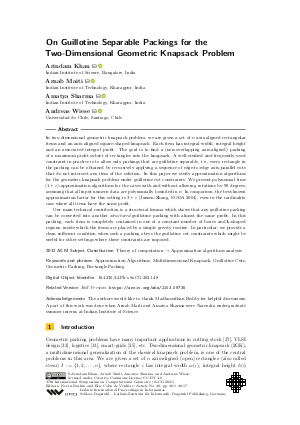LIPIcs.SoCG.2021.48.pdf
- Filesize: 0.74 MB
- 17 pages

 Creative Commons Attribution 4.0 International license
Creative Commons Attribution 4.0 International license



















































Feedback for Dagstuhl Publishing